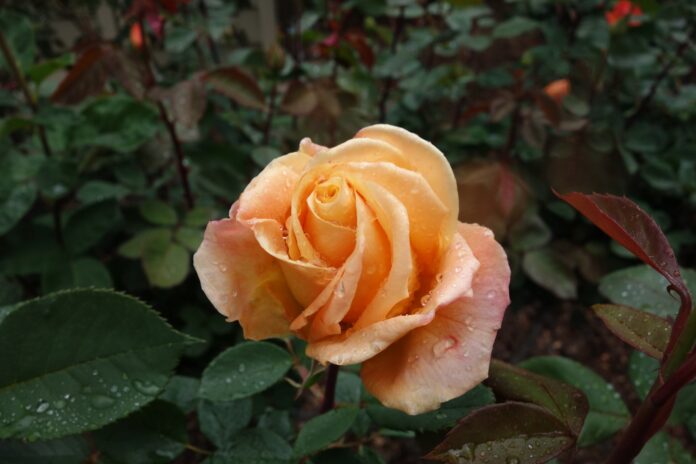It was an especially fragrant bouquet of roses on my dining table this week that got me thinking about what an incredible thing our sense of smell is. It’s the only sense that has a direct connection to our brains. We can detect at least a trillion distinct scents. Our scent cells are renewed every 30 to 60 days. Some of the most pleasurable scents, according to recent research, include vanilla, some orange scents, cinnamon, crayons and cookies. I don’t have any crayon or cookie scented flowers but wouldn’t that be a great addition in the garden?
Where does fragrance come from? Fragrance in flowers is nature’s ways of encouraging pollination. Just as it draws you to take a deeper whiff, it lures insects to blossoms hidden by leaves and other plants. Some flowers are fragrant only at night and attract only night-flying pollinators like moths, while others are more fragrant only during the day and attract insects like bees and butterflies. The fragrance itself comes from essential oils called attars that vaporize easily and infuse the air with their scents. They are present in different combinations in different plants, but often they are markedly similar which is why there are irises that smell like grapes and roses that smell like licorice.
Place sweet-smelling plants where you can enjoy them throughout the season. The potency of flower scents varies greatly, so consider the strength of a fragrance when deciding where to put a plant. Subtle fragrances such as sweet peas. lemon verbenas, scented geraniums and chocolate cosmos smell wonderful right outside the back door. Add stronger scents where people naturally congregate- decks, pools and spa areas, dining alcoves, gazebos. Stargazer lilies, jasmine, lilacs, daphne, citrus and peonies will make your guests linger.
Your front entry should have fragrant plants to greet you when you come home. Train a fragrant climbing rose over a pergola at the gate. Fill some of the containers in your entry with scented bedding plants like dianthus , nemesia, freesias, stock or aromatic evergreens like rosemary and lavender. Plant sweet smelling shrubs like Mexican orange, buddleja, or philadelphus beside a path. Or plant carnations or lavender next to a garden bench or near your hammock.
Be sure to include fragrant plants that release their scent in the evening, especially in the areas of the garden you most frequent after dark. Since the majority of night-scented blossoms have white flowers, these plants also light up the landscape at night. Angel trumpet or brugmansia is one such plant as is flowering tobacco and night blooming jessamine.
Several easy-to-grow shrubs have fragrant flowers as an added bonus. Choisya blooms smell like oranges as does pittosporum eugenoides, tenuifolium and tobira. The tiny flower cluster of Fragrant Olive or osmanthus have a delicate apricot fragrance.
Other fragrant plants include California native Philadelphus lewisii. Calycanthus occidentals is native to our Central and Northern California mountains. Their fragrant burgundy flowers smell like red wine. Ribes viburnifolium, carpenteria californica and rosa californica are mildly scented, too.
Ideally, when you’ve finished, your garden will smell as intriguing as an expensive perfume. The top note will be floral- jasmine, honeysuckle, rose. The middle register will be spicy, such as the vanilla of heliotrope or purple petunias or the clove of dianthus. Finally, underneath the tones that give perfumes their vigor, like artemisia, sage and santolina.
Not every inch of the garden needs to be fragrant but a waft or two of fragrance from the right plants can turn a garden from ordinary to enchanting.













